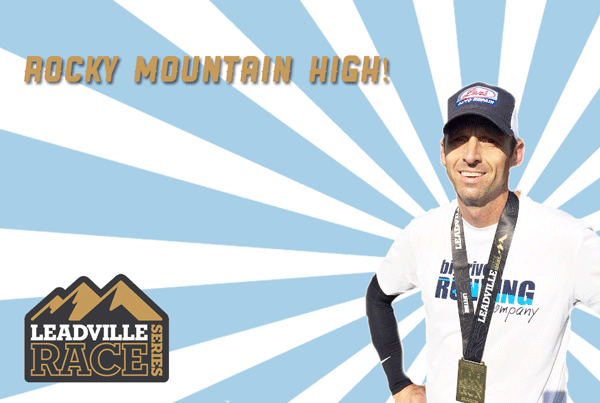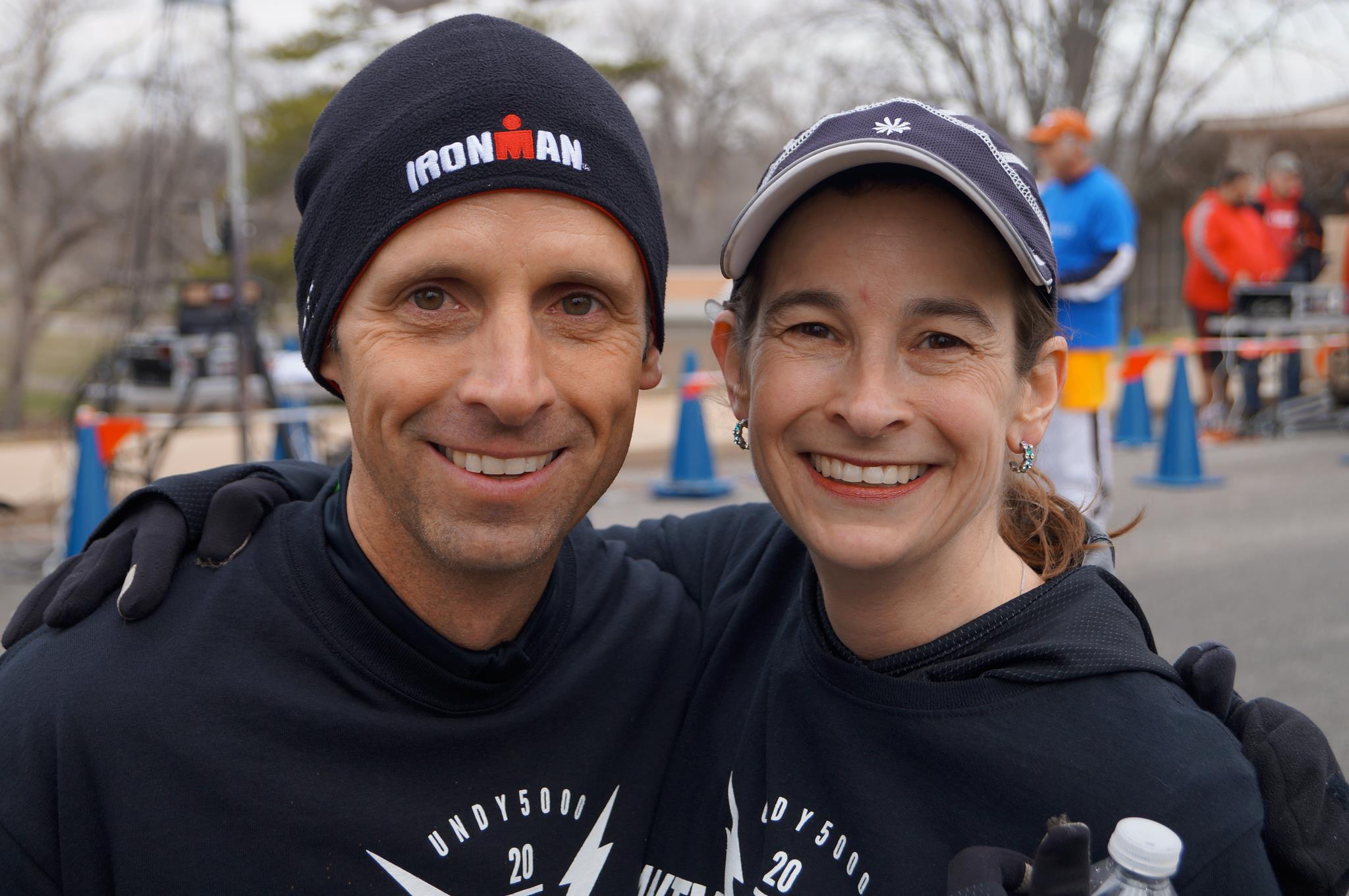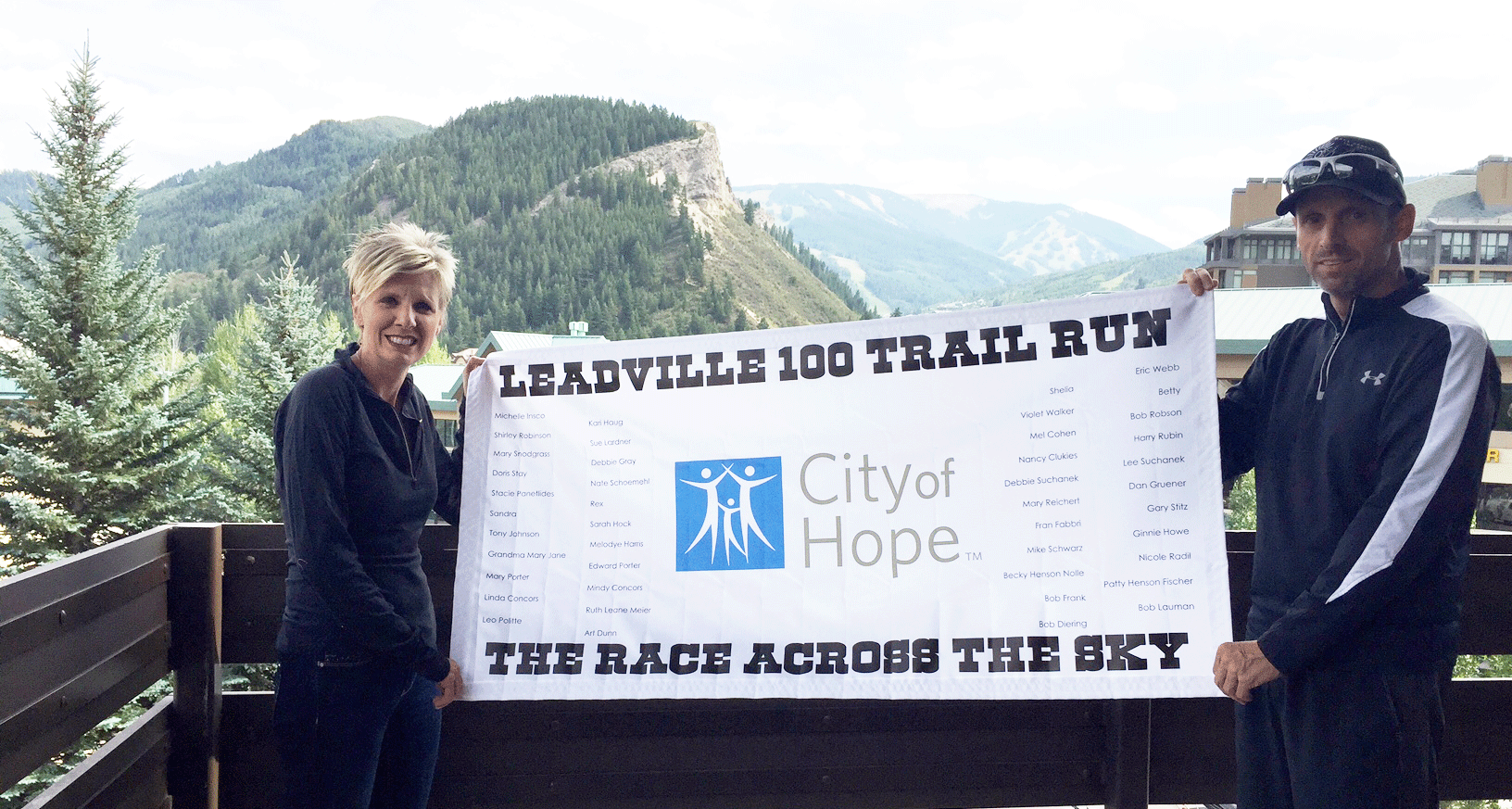
A recap and interview with Ted Gruener, after he just ran 100 miles in 28.5 hours
Last week at this time, we were sending Ted our final well wishes as he was preparing to run in the Leadville 100 Race Across the Sky. After months of preparation and buildup, the moment of actually putting one foot in front of the other was finally here.
We made a big deal out of Ted and the race because he was undertaking this enormous endeavor not only as a personal challenge to himself but as a way to garner support for his sister and others close to him who are battling cancer. By either measure, he was successful. We made a big deal out of it because he dedicated his run to his sister, who is fighting colon cancer, and OE’s own Shirley and Sue and so many others we’re connected to who have been touched by cancer in one way or another. And because he was going to run a hundred freaking miles.

To date, Ted has raised over $8000 for the City of Hope and he will close out his fund-raising efforts with a celebration/cornhole tournament for friends and family at the end of September.
The Interview
Now, many of us around the office were wondering a lot of things about the race itself so we took some of the most burning and important questions to Ted in a post-race interview. Things like: What do you actually think about while running 100 miles in 30 hours? Where do you answer the call of nature? Did you win?
Below is a transcript of our interview with Ted. We hope you enjoy.
So Ted, you’re back from the race…your feet are no longer swollen twice as large as normal and presumably you’ve gotten yourself something to eat. Thanks for taking the time to answer a few of our questions…if you don’t mind, we’ll dive right in.
Q: How does one train to run a 100 mile race?
Ted: Without getting too complicated, it is really about logging long runs and doing many runs “on tired” legs. For instance, you may build up and do 30 miles on Sat and turn around and do 20 miles on Sunday.
Due to the extreme uphill and downhills in Leadville, I ran repeats on Marshall (Hill) Road. I would run 10 miles going up and then just killing myself on the way down to prepare my Quads for the beating they would take on the downhills. Many people don’t prepare for the downhills but I was fortunate to have a veteran trail running friend tip me off early. It was great advice as I passed many people as I was hammering downhill.
Q: What was your biggest concern about the race going into it?
Ted: My biggest concern was the sheer enormity and altitude of the course and the wear and tear over the miles.
Q: How did that concern play out during the race?
Ted: The altitude certainly felt like a key factor and the course was just relentless. Beautiful but relentless. I did not have a concern about my nutrition going in but that turned out to be a key factor as I fell behind on calories between miles 30–40. Once I made the switch away from liquids and on to whole foods, I perked up and had a much better race.
Q: So you kind of just alluded to it, but during the race, how do you eat?
Ted: There are a total of 9 Aid Stations throughout the 100 miles at Leadville. Because you only get to those aid stations every few hours, I ran with 2–4 water bottles at all times as well as carried some nutrition in a race vest. Because it is typically easier on your stomach to handle, one of those bottle is filled with a dense calorie drink to keep me going. I also take energy gels every 45 min to add another 100 calories
Q: What about solid foods?
Ted: Aid Stations carry a variety of things. Some have more than others. For instance, the aid station at the top of Hope Pass is so remote, they use lamas to carry the food and water up to 12,400 feet so the selection is limited.
Because my liquid nutrition was not providing enough on this day, I ate a TON of Ramen Noodles and also a lot of boiled potatoes dipped in table salt. My mother made me some homemade chicken noodle soup that was fantastic. You need to keep the carbohydrates coming into your system.
Some people like to get a sugar jolt so gummy worms, candy, etc. are available. Flat Coke is typically a hit for those that want to get some caffeine. I typically stick to the carbs to avoid “crashing” when that sugar and caffeine leaves the system.
Q: A lot of people were wondering about your shoes. Did you wear the same pairs of shoes and socks the whole time?
Ted: I wore the same pair of Hoka Challenger ATR’s for 95 miles and then changed into road running shoes for the last 5 miles. Many people do change shoes as we had to trudge through thigh high river crossings at mile 40 and 60 but I typically opt to stay in the same shoes and let them slowly dry.
Q: What was your pre-race meal?
Ted: I had a large bowl of pasta with red sauce and a small diner salad the evening before. I woke up at 2:30am to get two bowls of oatmeal and a cliff bar in my system before the 4am start.
Q: What did you eat after?
Ted: Immediately after the race, I forced down a turkey sandwich. After the award ceremony and hour drive back to Vail, I killed a Pepperoni and Sausage Pizza along with exactly one Colorado Native Amber Lager before I passed out fat and happy.
Q: You were probably pretty hungry. How many calories did you burn during the race?
Ted: I burned around 12,000 calories (or roughly 4–5 days of food)
Q: Did you have any weird cravings after the race?
Ted: Not really. I can certainly eat guilt free for the week though.
Q: What was the biggest challenge during the race?
Besides the obvious mountains and altitude, the biggest challenge is keeping it all together mentally when the going gets tough.
There are so many things that can go wrong in terms of nutrition or pacing strategy. Over 100 miles, you will have multiple low points and absolutely want to quit. In fact, your mind will start to rationalize why you should quit….”My friends are on the couch right now, at least I gave it a shot” or “Maybe it just was not my year because work was busy or the kids schedule was crazy”
The challenge is to stay mentally strong (or stubborn) and vow not to quit. When I felt like absolute hell about 4–5 times on the mountain that day, I thought a about my sister Shelli, Shirley, Sue and all of the people fighting cancer every day. They don’t have a choice to quit! We are working hard to find a cure but until that time, they don’t have a choice and need to keep fighting. My fight with that mountain was so much smaller than their daily fight, it seemed only fair that I keep fighting too!
Q: Along those lines, what do you think about while running for 30 hours?
Ted: The best way I can describe it is that running 100 miles is similar to survival. If you don’t pay attention to the details and continuously take in data (from your body, the course, crew, etc.) you will not make it.
It is not really an option to completely shut your mind off.
I think about my nutrition – how many calories have I put in this hour? Is my stomach handling it? Will I need to change my strategy over time?
I think about my pace – is this the pace I can sustain for the long haul. Should I back off a bit because I have 3,000 feet of climbing over the next 5 miles?
I think about the upcoming aid station before I get there – do I need a headlamp? A jacket or stocking cap? Do I need to replenish my energy gels or electrolyte caps? How far to the next aid station? Do I need to load down with 4 water bottles or will 2–3 be fine?
I think about work and my family non-stop while out in St. Louis on a training run, but at the race, I am thinking about me. What do I need to do to get my tail across that finish line?
At some point (or better yet many small points) during the race, your brain is on overload and it helps to have a great crew to help think for you.
You are allowed crew members at all aid stations to help get the things you need in your pack to complete the next section. I was fortunate to have an awesome crew of family members that stayed up all night jumping from aid station to aid station just to make sure they gave me a cup of my mother’s homemade chicken noodle soup (Heaven compared to Ramen Noodles), replace batteries in headlamps or just to give me a high five to lift my spirits.
After 50 miles, you can have a pacer run the trail back with you. I ended up with an all-star crew that included my wife Barb (who is a State Champion runner and has completed probably over 50 marathons and ultra distance events), Greg Lauman (who has finished two 100’s and completed the Leadville 100 Mountain Bike Race the week before), David Concors (who I ran a marathon with in the past and is competing in the Hotter than Hell 100 Bike race this weekend) and Jeff Pupillo (who I have competed in a couple Ironman’s with and is an accomplished cyclist and runner).
It is possible to finish without pacers and crew but very few even attempt to do it. It really takes a team effort and they all share in a piece of that Leadville 100 belt buckle!
Finally, I visualize success. In my mind, that Leadville Belt Buckle was around my waist from the time the shotgun started. I visualize the joy I saw in my family and pacers eyes when I crossed that finish line and “WE” did it!
Q: I sent you some emails while you were running, why didn’t you answer them?
Ted: I did not answer them because I am trying to shorten all responses after receiving the OE Award for longest messages. My strategy is to simply not respond so I don’t win that award next year.
Q: Did you win? Seriously though, how many people ran in this race, and how many finished?
Ted: There were around 650 that started the race. There were 320 finishers. (Just short of 50% finished)
Q: What’s next for you?
Ted: I always say I want to retire when I can’t see my ankles for two days after the race or I can walk down stairs forwards. So far, that strategy has not played out for me. I think it is just a curiosity deep down inside that craves the next challenge. I think it keeps me sharp and young. Only time will tell.
As far as the real world goes, I am happy to be back at it trying to kick butt at work at an independent dealer that will be formidable for many years to come.
Joining the fight against cancer in a bigger way is something that will also be churning in my mind.
Q: Now that the race is over, are you planning to gain some weight?
Ted: Yes. Muscle weight of course. My body ate too much muscle this past weekend and I don’t have a lot of muscle to spare.
Q: What would you say to somebody that was inspired by your run and wants to get moving but does not know where to start?
Ted: You can do anything you set your mind to. If you find that trigger to make you want to give it a shot, only your mind can stop you. Nothing is easy for the first 3 weeks. If you can get past the “3 week suck”, your mind and body will crave that new energy.
Thanks Ted, and seriously…congratulations on this amazing accomplishment.




